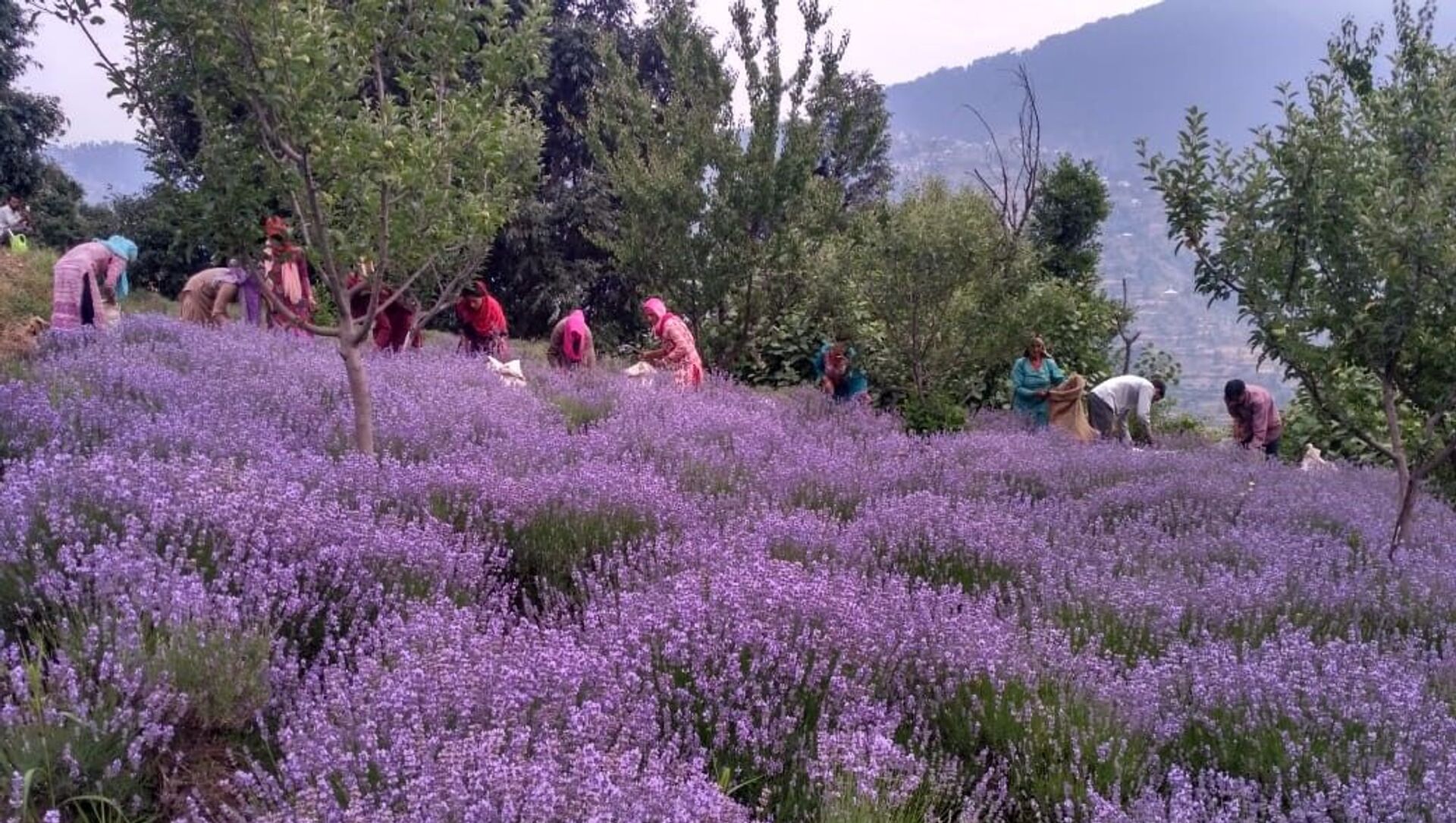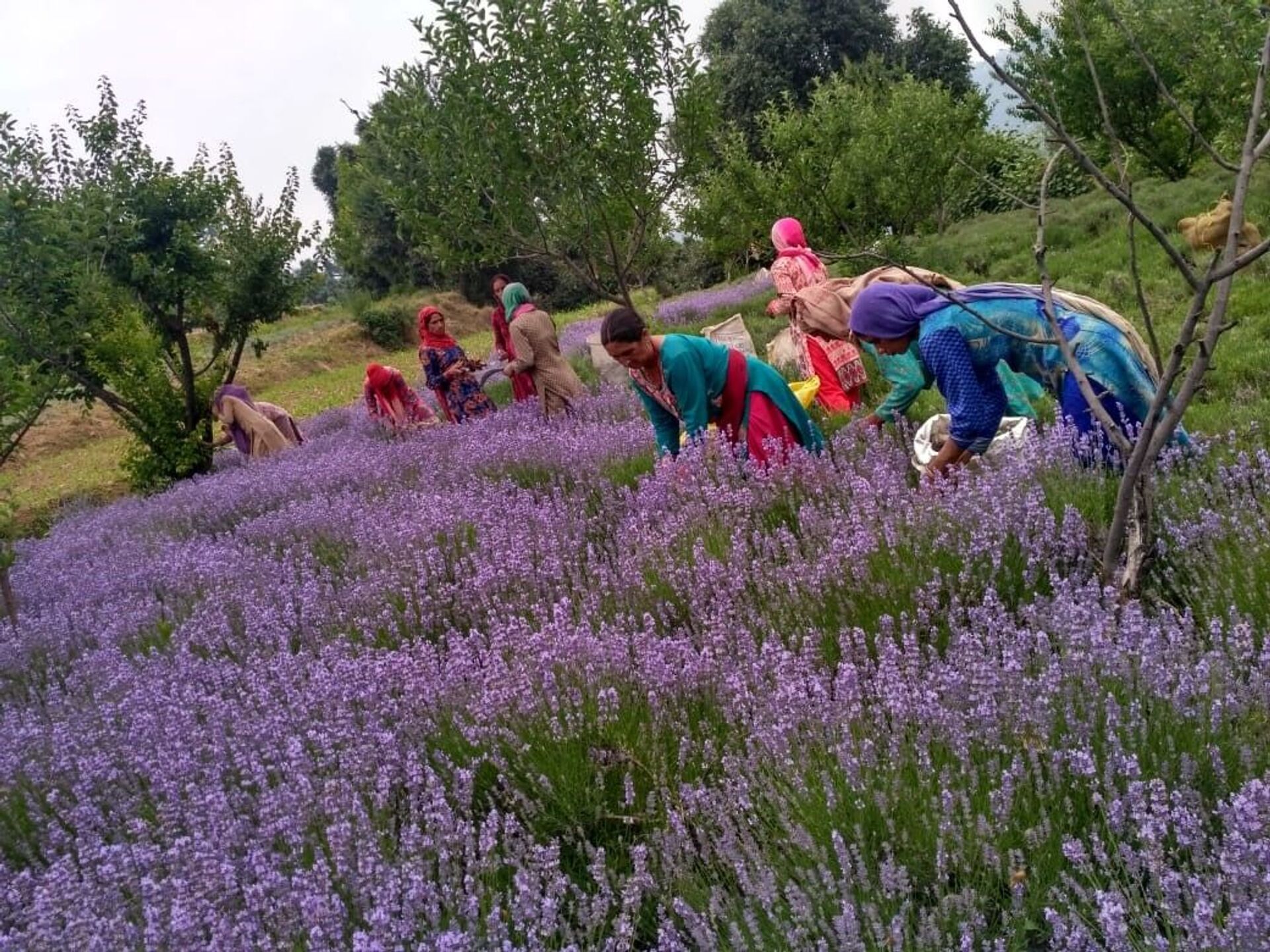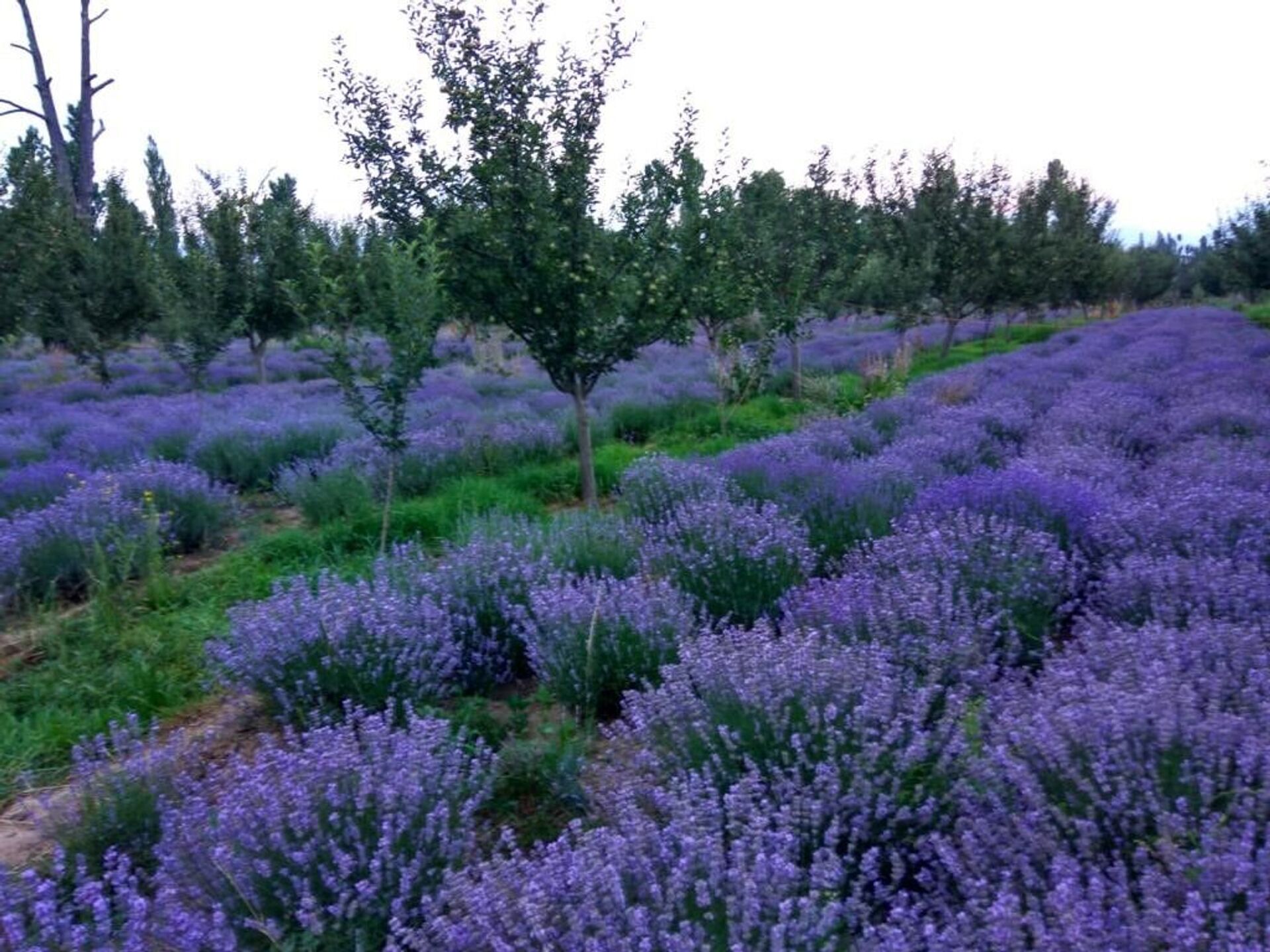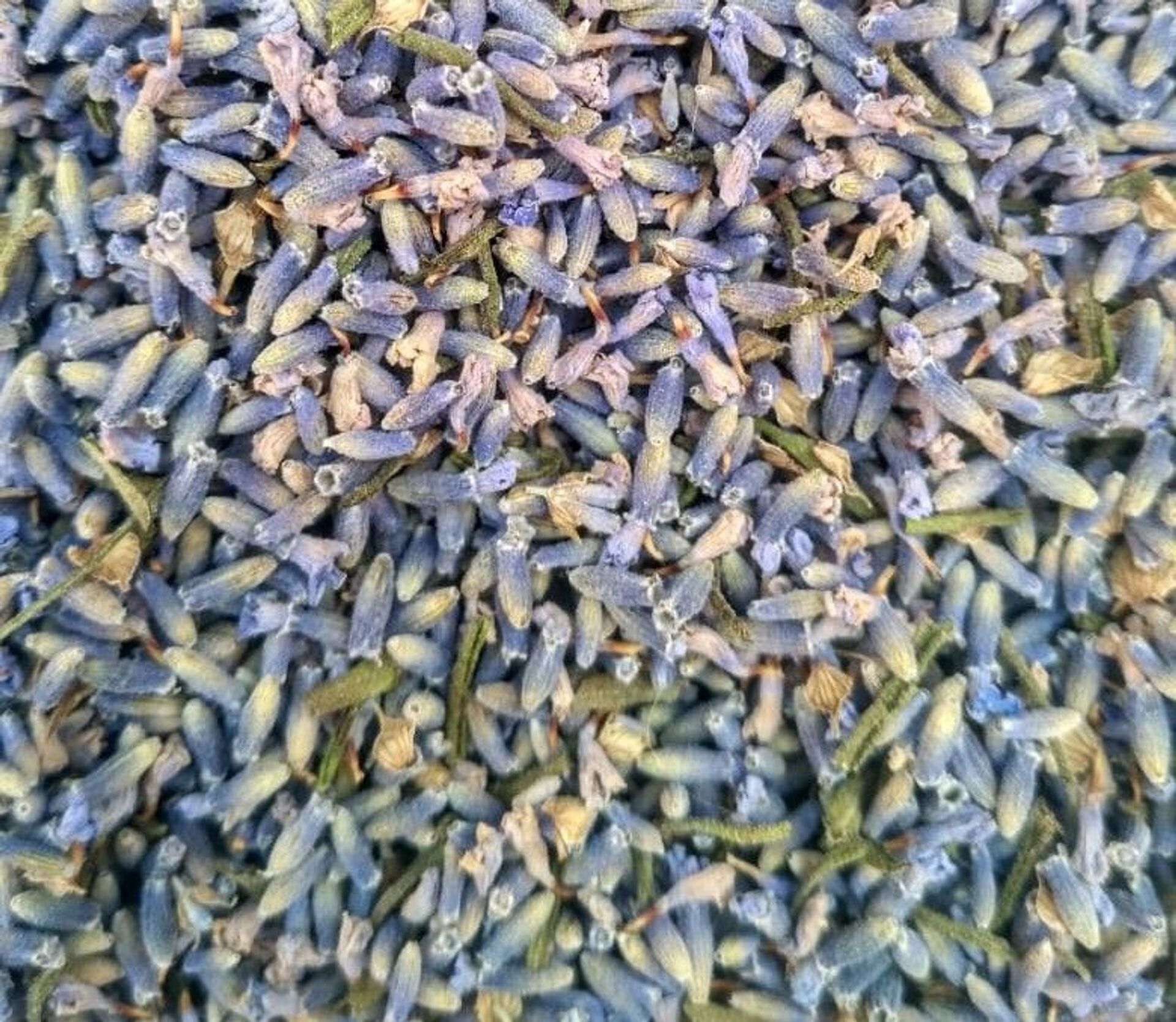Agro-based Industry Set to Bloom in India's Most Volatile Region as Kashmir Farmers Turn to Lavender
04:00 GMT 07.08.2021 (Updated: 14:40 GMT 06.08.2022)

© Sputnik / Sushmita Panda
Subscribe
It's early August and India's Jammu and Kashmir is covered in swarms of fragrant purple flowers. On the hilly slopes of the valley, lavender is ready for harvest. Despite early doubts, more than 1,000 farmers in the region have given up their traditional crops and introduced the "purple revolution" in Union Territory.
A decade ago, 43-year-old Bharat Bhushan used to cultivate maize, like most farmers of Khillani village in Jammu and Kashmir’s Doda district. In 2010, unaware of what fate had in store for him, Bhushan attended a programme by the Council of Scientific and Industrial Research (CSIR) and the Indian Institute Of Integrative Medicine, Jammu (IIIM-Jammu) in which farmers were encouraged to move to lavender cultivation.
CSIR-IIIM Jammu wanted to popularise aromatic crops such as lavender, which is native to European countries, among agriculturists across India to increase the income of small and marginal farmers. After much hesitation, Bhushan started producing lavender - and it wasn't easy. But soon his life changed.
"After the CSIR-IIIM Programme in 2010, I was curious so I started doing the cultivation on a small scale. Other farmers didn't pay much heed then. In the first year I didn't get much profit but after the second year, it gave us benefits much higher than our traditional crops. Then, every year the profits just kept rising. It was unbelievable. After three years, the profit had quadrupled and after this I planted lavender in my entire land," Bharat Bhushan told Sputnik.

People working at Bharat Bhushan's lavender farm in Jammu and Kashmir's Doda district.
© Sputnik / Sushmita Panda
In 2016, the Indian Government launched Aroma Mission to boost the cultivation of plants such as lavender which have aromatic medicinal properties, and this allowed Bhushan's hard work to bear fruits. In the same year, Bharat also managed to speak with Prime Minister Narendra Modi during a live video conference session which he says inspired him.
"Earlier, people from my village used to ridicule me, and even my family was unsupportive," Bhushan said, adding that more than 1,000 farmers have followed his lead in cultivating the medicinal plant. He also won the prestigious 'Innovative Farmer Award' from the Indian Agricultural Research Institute by devoting 62 acres of land to aromatic plant - in particular, lavender - cultivation in 2020.

Lavender Farmer Bharat Bhushan won the prestigious 'Innovative Farmer Award' from India's Agricultural Research Institute for devoting 62 acres of land to the cultivation of lavender in March last year.
© Sputnik / Sushmita Panda
"I have the same 1 to 2 acres of land and there are farmers who have big farms but they grow maize and I make four times more profit than them. I have two nurseries now. I have my own oil distillation plant. We get high demand for our oils from Delhi, Mumbai and Uttar Pradesh, among others. We are also growing other aromatic plants such as rosemary and geranium but on a small level. I feel extremely proud of myself and happy too," Bhushan said.
He also said he earns more than $5,000 annually from his farm but earns almost double from his nurseries. "I have taken the land for the nurseries on lease and I earn more than $13,000 annually because of lavender. I have also provided employment opportunities to the women of our village. Now I am working on my own range of lavender-based products such as handmade soaps, room fresheners, incense sticks, etc," Bhushan added.
Several industry insiders told Sputnik that a litre of oil extracted from the flowers is worth more than $130 and it is mostly used in the aroma industry. Meanwhile, the residue after oil extraction is used to make agarbattis (incense sticks) and soaps.

Bharat Bhushan extracts Lavender Oil from the distillation plant.
© Sputnik / Sushmita Panda
The farmers of the valley feel as if they have struck gold. They explained that once this easy-to-cultivate lavender is planted, there is no need to do anything for the next 15 or 16 years other than putting manure on it once in a while. Another bonus is that this crop cannot be attacked by monkeys or rodents. After the plant blooms, the flowers are harvested and the plant is ready to grow again in the next season. With little investment, this cash crop cultivation can easily give farmers $4,000 per hectare annually.
Scope for Agri-based Industry
The scenic valley which was previously known for its apple orchards, walnuts, mulberries, saffron, Chinar and Pine trees, roses, and even tulips, is now increasingly a "purple" landscape. Lavender is not just an ornamental plant - it is an economically viable perennial shrub.
Around 220km away from Bhushan's Doda district, Shaheen Shahdad in Jammu and Kashmir's Pulwama district is growing "purple gold" along with apples in her orchard. She lives in Srinagar and travels 55km every day to work at her farms.

Shaheen Shahdad's lavender farm in Jammu and Kashmir's Pulwama district.
© Sputnik / Sushmita Panda
"I started lavender cultivation in 2013. I was in apple farming and it occurred to me that I should explore lavender too. I did everything on my own and in the past seven or eight years the journey has been really good. I train everyone on my own. Some years we get good profits and some years we get less profit but yes the output is constant. I have five hectares and I have allotted half each to lavender and apple," Shahdad told Sputnik.

Shaheen Shahdad at her lavender farm in Jammu and Kashmir's Pulwama district.
© Sputnik / Sushmita Panda
Several farmers and horticulturists told Sputnik that Kashmir has the potential to grow the top 10 aromatic crops such as rose, lavender, rosemary, Geranium, clary sage, mint, and among these, rose and lavender are having prime importance in the global market. Rose and lavender can be grown in karewas [inter-mountain areas] of Kashmir where there is a lack of irrigation. Interestingly, the quality of oil extracted from Kashmir-based lavender is excellent as agro-climatic conditions of the region are highly suitable for quality production and yield.
According to government reports, around 686 hectares are being used for the cultivation of aromatic crops in Kashmir with a turnover of $94,000. There is an increasing demand for Aromatherapy across the world, especially for its therapeutic value. Lavender in Kashmir flowers in the last week of June and continues until the end of July. Though there is later flowering in the month of November it is not viable for lavender oil. The flowers during that period are collected, dried, and sold directly.

Harvested and dried lavender flowers from Bharat Bhushan's farm in Jammu and Kashmir's Doda district.
© Sputnik / Sushmita Panda
As demand and profits continue to rise, local entrepreneurs are also jumping in and helping the farmers in their cultivation and oil processing by providing technical support and quality planting material.
Moreover, other than providing technical support, CSIR and IIIM have given free essential oil distillation facilities to the farmers of Bhadarwah and it has led to the production of more than 800 litres of lavender oil worth more than $107,500 from 2018 to 2020.
Statistically, the world’s total production of essential oils is estimated at between 100,000 and 110,000 tonnes, and India stands third with a share of around 16 to 17 percent.




